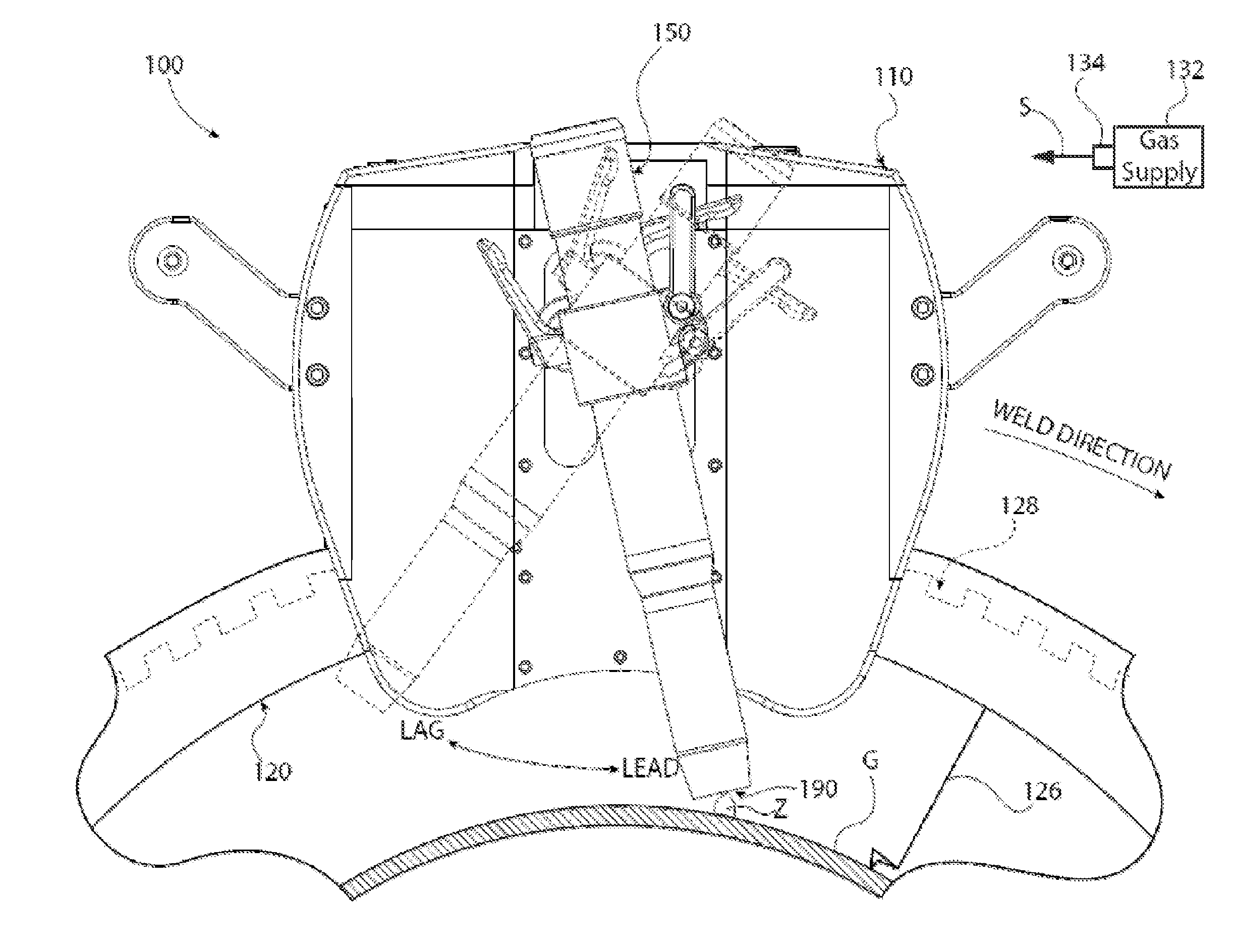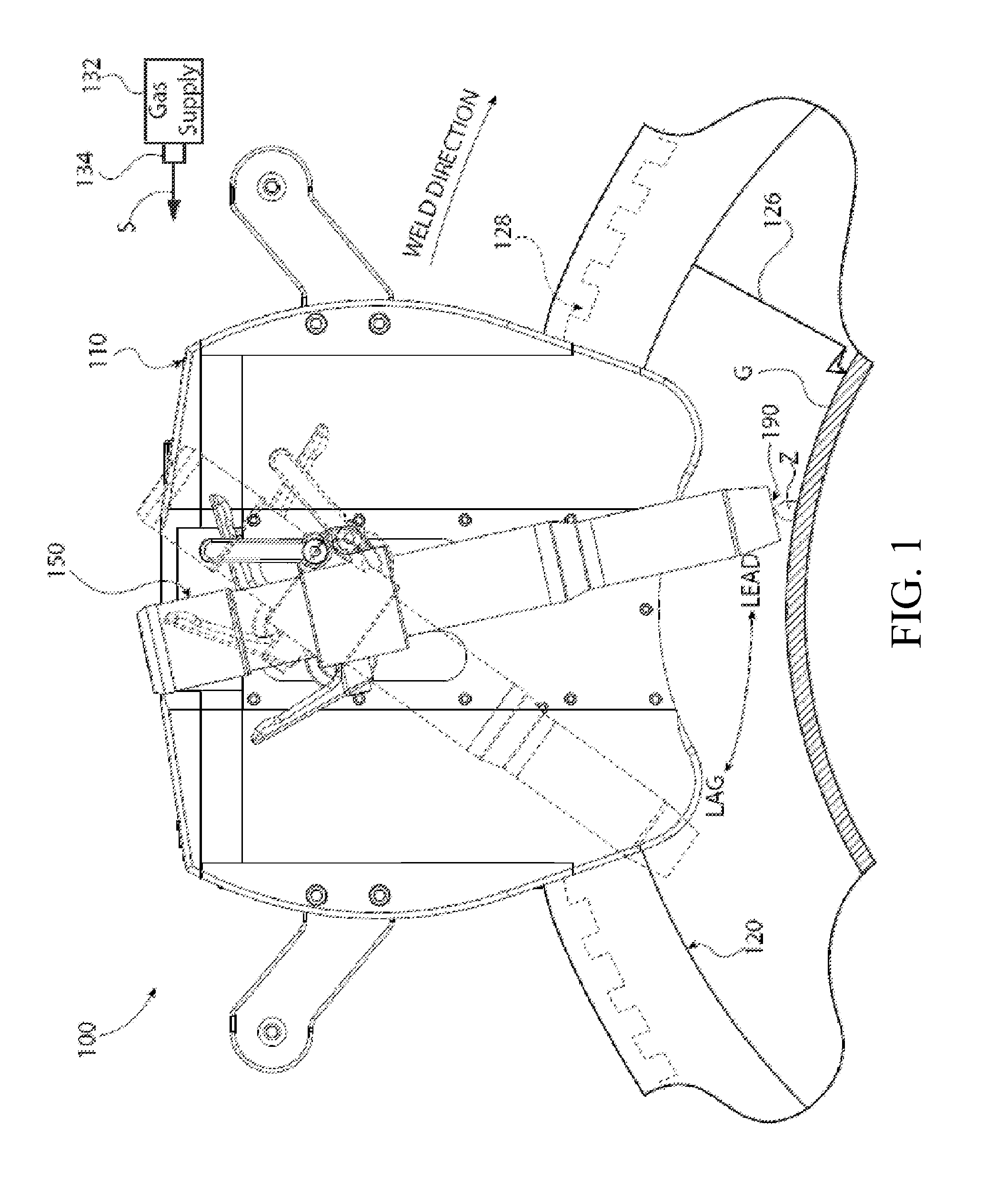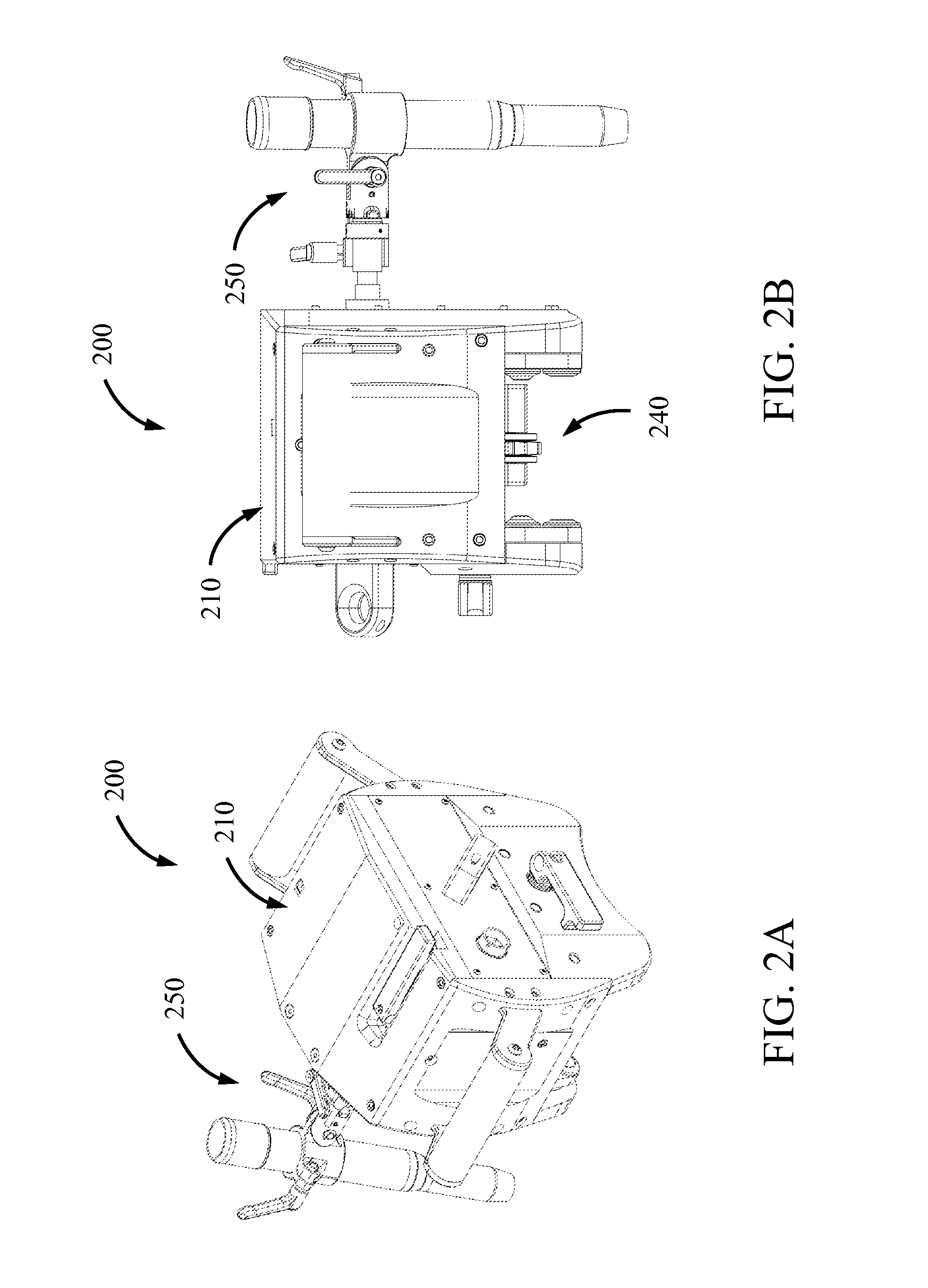Orbital welding torch systems and methods with lead/lag angle stop
a technology of orbital welding torch and angle stop, which is applied in the direction of manufacturing tools, soldering devices, auxilary welding devices, etc., can solve the problems of inability to simply and quickly readjust to a specific angle, inability to accurately measure lead or lag angle or establish repeatable reference points,
- Summary
- Abstract
- Description
- Claims
- Application Information
AI Technical Summary
Benefits of technology
Problems solved by technology
Method used
Image
Examples
Embodiment Construction
[0018]The disclosure herein generally pertains to systems and methods related to accurate, repeatable setting of welding torch lead and lag angles in orbital welding systems. Such systems and methods allow one or more torch head positions, including lead or lag angle, to be set to a set torch position using movable stops, known-position detents, and others. This enables an operator to quickly move the torch to or from multiple known positions, ensuring the torch angle will return to the same set torch position(s) each time. In some embodiments, an operator may accurately set the torch angle by viewing a measurable angle on a scale. Further, the components of the invention permit other adjustments, such as the torch offset in reference to a work piece, a torch height in relation to the work piece, and angles other than lead or lag such as a work or bevel angle.
[0019]Specifically, in one embodiment, a torch is coupled with a lead-lag coupler having at least one stop lug. A stop set wi...
PUM
| Property | Measurement | Unit |
|---|---|---|
| angles | aaaaa | aaaaa |
| angles | aaaaa | aaaaa |
| perimeter | aaaaa | aaaaa |
Abstract
Description
Claims
Application Information
 Login to View More
Login to View More - R&D
- Intellectual Property
- Life Sciences
- Materials
- Tech Scout
- Unparalleled Data Quality
- Higher Quality Content
- 60% Fewer Hallucinations
Browse by: Latest US Patents, China's latest patents, Technical Efficacy Thesaurus, Application Domain, Technology Topic, Popular Technical Reports.
© 2025 PatSnap. All rights reserved.Legal|Privacy policy|Modern Slavery Act Transparency Statement|Sitemap|About US| Contact US: help@patsnap.com



